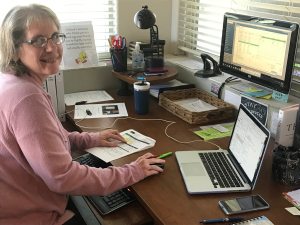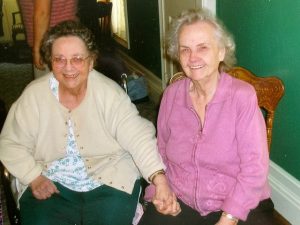12 Ideas for Exercise and Physical Activities for Seniors with Dementia
Exercise has many benefits for seniors with dementia
Exercise is an excellent, non-drug way to improve well-being and reduce challenging behaviors in seniors with dementia. The important thing is to find exercises that are enjoyable and safe for their ability level.
Staying active improves sleep, strength, flexibility, and circulation. Exercising is also an effective way to reduce fall risk and can reduce pain. Plus, it’s a great way to boost mood and self-esteem.
All these benefits work to reduce and manage challenging behaviors like agitation, sundowning, disrupted sleep, and more.
We explain how to encourage someone with dementia to exercise and share 12 great exercise ideas for all ability levels.
We also describe how to figure out what amount of exercise is best, the benefits of exercise, and how to keep seniors safe while exercising.
How to encourage someone with dementia to exercise
Getting someone with dementia to exercise may not always be easy, especially if they haven’t exercised regularly in the past.
It may help if you don’t refer to it as exercise, but treat it as just another regular task in their daily routine or as a fun special activity like a “dance party.”
Another thing to keep in mind is that many people with dementia struggle to start activities on their own and remember sequences. That’s why it’s so helpful to exercise with your older adult.
That way, you can demonstrate the movements, slow the pace as needed, and provide help when needed. Being able to mimic your movements and not having the pressure of having to remember what to do makes it a more enjoyable activity for your older adult.
Leading them in exercise may seem like yet another thing to pack into your nonstop day, but it’s a great way to reduce challenging behaviors and improve sundowning symptoms – plus it helps you get active too.
12 ideas for physical activities for seniors with dementia
Simple
- Walking – one of the best exercises around (and it’s free!). Walking around the house, the yard, or outside for any amount of time is wonderful for body and mind. You could even combine the walk by doing an errand together like walking the dog or going to the grocery store.
- The sit to stand exercise – strengthens muscles needed for essential activities like using the toilet
- Stay balanced in a standing position (hold on to a support when needed) – improves balance and posture, can be a standalone exercise or part of an everyday activity like washing dishes
- Sit unsupported for a few minutes each day (with constant supervision to prevent falls) – strengthens the abdominal and back muscles needed for posture
- Stretch while lying in bed – move various body parts and stretch stiff muscles, this can be done with assistance or independently
Moderate
- Stretches and/or strength exercises
- Tai chi – try these routines that can be adapted for a variety of physical conditions
- Gardening – something simple like raking or pulling weeds gives a sense of accomplishment and is a great workout
- Household chores – basic chores can be great exercise, like folding laundry, dusting, light vacuuming, or washing the car
Advanced
- Dancing – this is a fun activity that doesn’t feel like exercise. Play your older adult’s favorite dance music at home and lead them in a private dance party in the living room. Or, look for social events at senior centers that include dancing.
- Exercise class – some senior centers or similar organizations offer classes specifically for people with dementia
- Water exercise – consider going with your older adult to a local class at the YMCA or senior center
How much exercise is recommended?
Each person’s health, personality, and cognitive abilities are different, so it will take some experimenting to find the amount and type of exercise that works well for your older adult.
In general, aim for the amount that helps them feel good, both physically and mentally. And make sure to start slow and build up slowly. Any amount of exercise is great, no matter how small. Pushing too hard doesn’t help and could cause injuries.
For example, some people may enjoy a few 10 minute sessions throughout the day. Others might like to do 30 minutes all at once. And some may need to start with only 2 minutes and slowly build up from there.
Keeping exercise safe is the top priority
Exercise is helpful in many ways for seniors with dementia, but the top priority is to make sure they stay safe before, during, and after physical activities.
Safety tips:
- Before starting, sheck with the doctor to make sure that exercise is safe for their physical and cognitive conditions.
- Monitor the level of exertion by checking in with brief conversations. If they can speak without being short of breath, the pace is comfortable. If they can’t hold a conversation because they’re breathing too hard, slow the pace.
- Keep them hydrated with plenty of water before, during and after exercising.
- For outside activities, make sure they’re wearing a medical alert bracelet, personal identification, and/or a GPS tracker in case they get separated from you.
- If they get dizzy, weak, or experience pain, stop immediately and rest. Talk to their doctor to find out if future exercise will be safe.
Source: https://dailycaring.com/12-ideas-for-exercise-and-physical-activities-for-seniors-with-dementia/
Question:
- Christine suggests batting a balloon back and forth with your senior friend and counting how many times you hit it back and forth between each other. Do you have any other unique or fun ways of exercising?





























